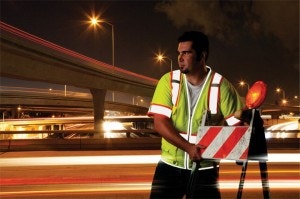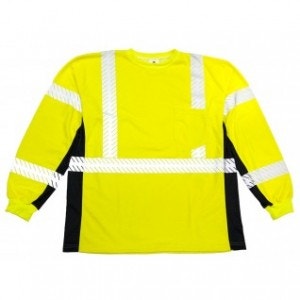Every year workers and employees sustain injuries and/or are killed working roadside including highway and pavement workers, construction crews, law enforcement and first responders, incident command - these people all run the risk of not being seen by motorists, careless and fast driving, fellow employees running big equipment and simply blending into their backgrounds. The use of
high-visibility safety vests can save lives.
The American National Standards Institute (ANSI) has established standards, ANSI/ISEA 107-2004, for hi-vis vests and other
high visibility gear. Such high visibility clothing is available in many forms, the most common being a Class 1 safety vest, Class 2 safety vest or Class 3 safety vest. Otherwise known as a traffic vest or construction vest, this category also includes retro-reflective jackets, reflective sweatshirts and fluorescent T-shirts.
For inclement weather, ANSI jackets, ANSI parkas, fleece-lined bombers and rain gear, or even reflective sweatshirts might do the trick. In warmer times of the year, reflective and fluorescent T-shirts may be more appropriate. Shown above is the
Black Series Windbreaker.
ANSI hi-visibility clothing must be visible both by day and night and the ANSI standard sets the amount of reflective material the garment must have. Hi-vis clothing complying with the ANSI standards has become the status quo throughout industry as an effective way to protect workers by increasing their visibility. Also, workers within the right-of-way of a Federal-aid highway near traffic, light or heavy equipment or machinery within the work area are required to wear a ANSI approved reflective clothing such as an ANSI jacket or traffic vest, and possibly additional high visibility safety apparel. Additionally, those workers who would need hi vis clothing include highway workers and pavers, surveyors, equipment and truck drivers, construction and maintenance crews, inspectors, flaggers, incident command and first responders (EMS and firefighters).




